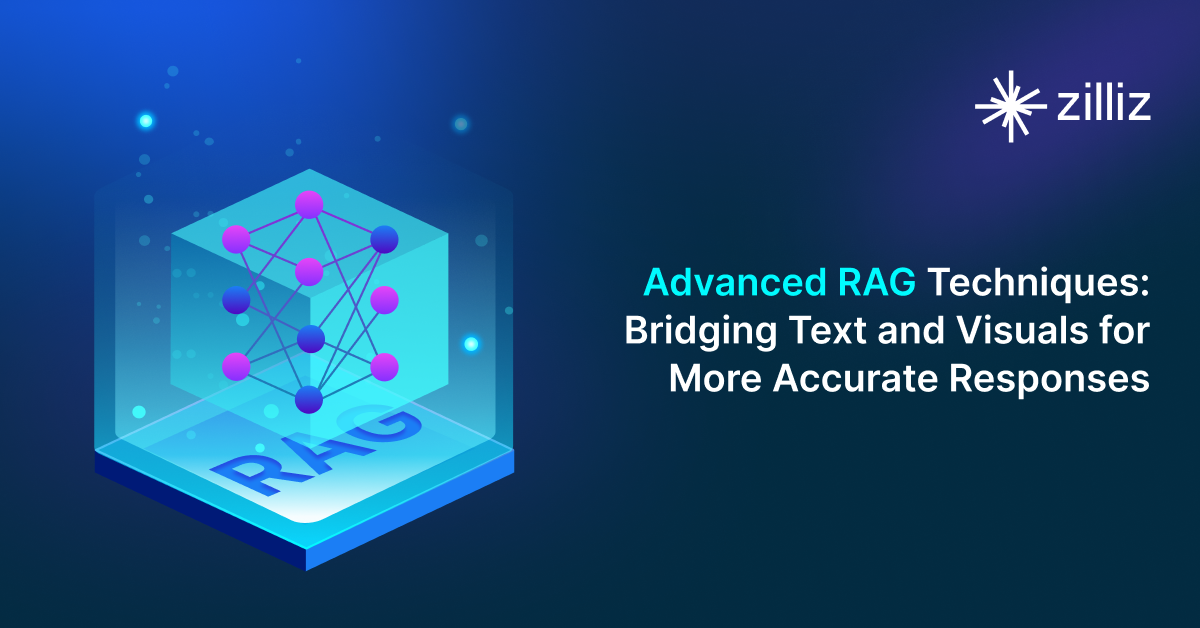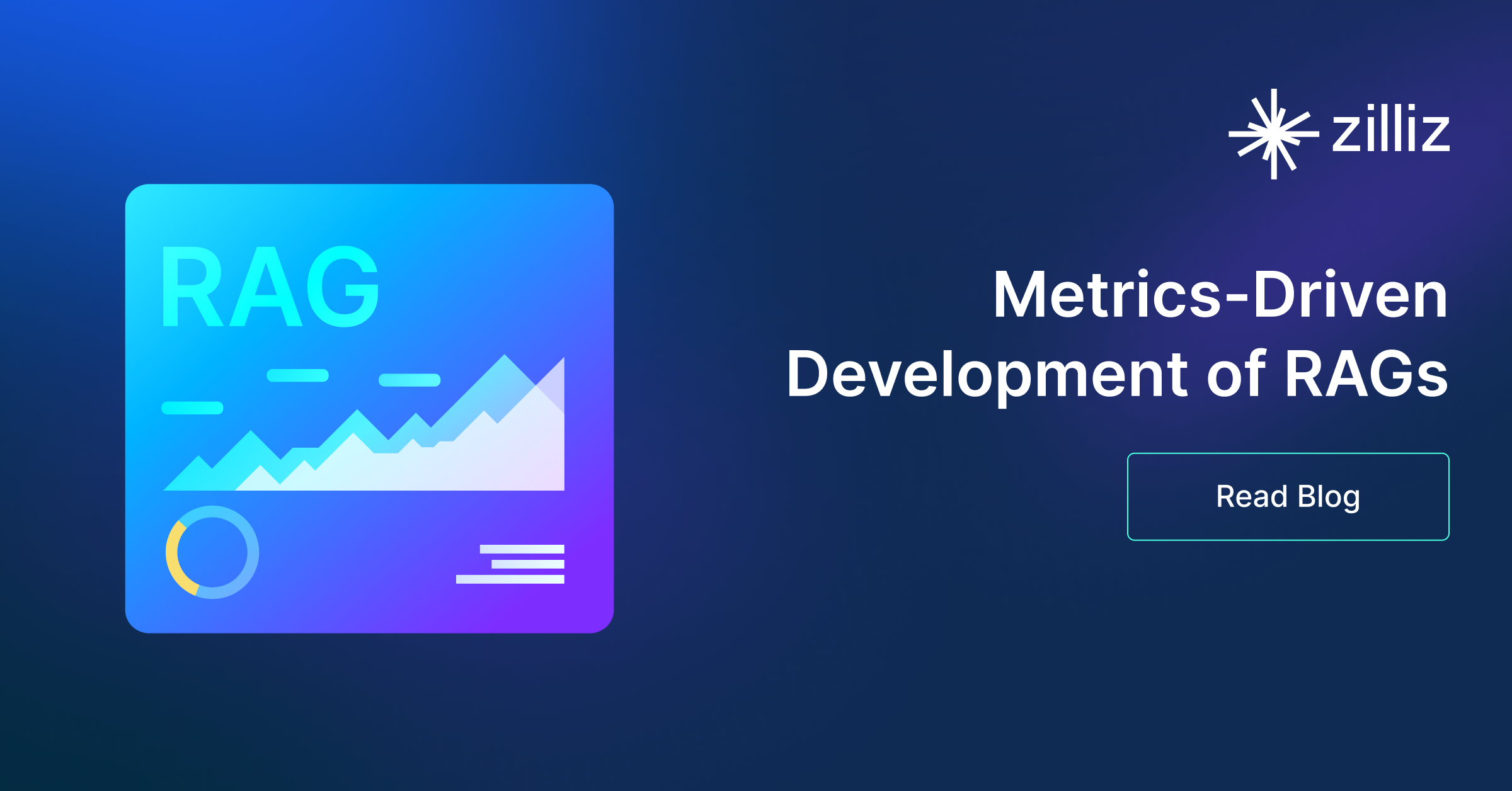Build RAG Chatbot with LangChain, Milvus, AWS Bedrock Claude 3.5 Sonnet, and HuggingFace all-mpnet-base-v2
Introduction to RAG
Retrieval-Augmented Generation (RAG) is a game-changer for GenAI applications, especially in conversational AI. It combines the power of pre-trained large language models (LLMs) like OpenAI’s GPT with external knowledge sources stored in vector databases such as Milvus and Zilliz Cloud, allowing for more accurate, contextually relevant, and up-to-date response generation. A RAG pipeline usually consists of four basic components: a vector database, an embedding model, an LLM, and a framework.
Key Components We'll Use for This RAG Chatbot
This tutorial shows you how to build a simple RAG chatbot in Python using the following components:
- LangChain: An open-source framework that helps you orchestrate the interaction between LLMs, vector stores, embedding models, etc, making it easier to integrate a RAG pipeline.
- Milvus: An open-source vector database optimized to store, index, and search large-scale vector embeddings efficiently, perfect for use cases like RAG, semantic search, and recommender systems. If you hate to manage your own infrastructure, we recommend using Zilliz Cloud, which is a fully managed vector database service built on Milvus and offers a free tier supporting up to 1 million vectors.
- AWS Bedrock Claude 3.5 Sonnet: This model combines the advanced language processing abilities of Claude 3.5 with AWS's scalable infrastructure, offering enhanced performance for complex text generation tasks. Its strengths lie in versatility and resilience, making it ideal for applications in creative writing, customer support automation, and interactive content generation.
- HuggingFace all-mpnet-base-v2: This model is a variant of MPNet designed for general-purpose NLP tasks, offering superior performance in sentence embeddings and semantic similarity. It excels in understanding contextual nuances, making it ideal for search, recommendation systems, and any application requiring robust textual comprehension and matching capabilities.
By the end of this tutorial, you’ll have a functional chatbot capable of answering questions based on a custom knowledge base.
Note: Since we may use proprietary models in our tutorials, make sure you have the required API key beforehand.
Step 1: Install and Set Up LangChain
%pip install --quiet --upgrade langchain-text-splitters langchain-community langgraph
Step 2: Install and Set Up AWS Bedrock Claude 3.5 Sonnet
pip install -qU "langchain[aws]"
# Ensure your AWS credentials are configured
from langchain.chat_models import init_chat_model
llm = init_chat_model("anthropic.claude-3-5-sonnet-20241022-v2:0", model_provider="bedrock_converse")
Step 3: Install and Set Up HuggingFace all-mpnet-base-v2
pip install -qU langchain-huggingface
from langchain_huggingface import HuggingFaceEmbeddings
embeddings = HuggingFaceEmbeddings(model_name="sentence-transformers/all-mpnet-base-v2")
Step 4: Install and Set Up Milvus
pip install -qU langchain-milvus
from langchain_milvus import Milvus
vector_store = Milvus(embedding_function=embeddings)
Step 5: Build a RAG Chatbot
Now that you’ve set up all components, let’s start to build a simple chatbot. We’ll use the Milvus introduction doc as a private knowledge base. You can replace it with your own dataset to customize your RAG chatbot.
import bs4
from langchain import hub
from langchain_community.document_loaders import WebBaseLoader
from langchain_core.documents import Document
from langchain_text_splitters import RecursiveCharacterTextSplitter
from langgraph.graph import START, StateGraph
from typing_extensions import List, TypedDict
# Load and chunk contents of the blog
loader = WebBaseLoader(
web_paths=("https://milvus.io/docs/overview.md",),
bs_kwargs=dict(
parse_only=bs4.SoupStrainer(
class_=("doc-style doc-post-content")
)
),
)
docs = loader.load()
text_splitter = RecursiveCharacterTextSplitter(chunk_size=1000, chunk_overlap=200)
all_splits = text_splitter.split_documents(docs)
# Index chunks
_ = vector_store.add_documents(documents=all_splits)
# Define prompt for question-answering
prompt = hub.pull("rlm/rag-prompt")
# Define state for application
class State(TypedDict):
question: str
context: List[Document]
answer: str
# Define application steps
def retrieve(state: State):
retrieved_docs = vector_store.similarity_search(state["question"])
return {"context": retrieved_docs}
def generate(state: State):
docs_content = "\n\n".join(doc.page_content for doc in state["context"])
messages = prompt.invoke({"question": state["question"], "context": docs_content})
response = llm.invoke(messages)
return {"answer": response.content}
# Compile application and test
graph_builder = StateGraph(State).add_sequence([retrieve, generate])
graph_builder.add_edge(START, "retrieve")
graph = graph_builder.compile()
Test the Chatbot
Yeah! You've built your own chatbot. Let's ask the chatbot a question.
response = graph.invoke({"question": "What data types does Milvus support?"})
print(response["answer"])
Example Output
Milvus supports various data types including sparse vectors, binary vectors, JSON, and arrays. Additionally, it handles common numerical and character types, making it versatile for different data modeling needs. This allows users to manage unstructured or multi-modal data efficiently.
Optimization Tips
As you build your RAG system, optimization is key to ensuring peak performance and efficiency. While setting up the components is an essential first step, fine-tuning each one will help you create a solution that works even better and scales seamlessly. In this section, we’ll share some practical tips for optimizing all these components, giving you the edge to build smarter, faster, and more responsive RAG applications.
LangChain optimization tips
To optimize LangChain, focus on minimizing redundant operations in your workflow by structuring your chains and agents efficiently. Use caching to avoid repeated computations, speeding up your system, and experiment with modular design to ensure that components like models or databases can be easily swapped out. This will provide both flexibility and efficiency, allowing you to quickly scale your system without unnecessary delays or complications.
Milvus optimization tips
Milvus serves as a highly efficient vector database, critical for retrieval tasks in a RAG system. To optimize its performance, ensure that indexes are properly built to balance speed and accuracy; consider utilizing HNSW (Hierarchical Navigable Small World) for efficient nearest neighbor search where response time is crucial. Partitioning data based on usage patterns can enhance query performance and reduce load times, enabling better scalability. Regularly monitor and adjust cache settings based on query frequency to avoid latency during data retrieval. Employ batch processing for vector insertions, which can minimize database lock contention and enhance overall throughput. Additionally, fine-tune the model parameters by experimenting with the dimensionality of the vectors; higher dimensions can improve retrieval accuracy but may increase search time, necessitating a balance tailored to your specific use case and hardware infrastructure.
AWS Bedrock Claude 3.5 Sonnet optimization tips
Claude 3.5 Sonnet in AWS Bedrock delivers an improved balance of efficiency and reasoning. Optimize retrieval by incorporating reranking techniques that prioritize the most contextually relevant documents. Keep prompts structured and avoid unnecessary details to prevent context window saturation. Use temperature values between 0.1 and 0.3 for factual responses, fine-tuning top-p and top-k as needed. Cache frequently accessed data to reduce redundant API calls and lower operational costs. Leverage AWS Bedrock’s elastic scaling to handle demand spikes while maintaining performance. If used with Claude 3.5 Opus, delegate more complex reasoning tasks to Opus while Sonnet handles general-purpose queries.
HuggingFace all-mpnet-base-v2 optimization tips
HuggingFace all-mpnet-base-v2 is a robust and efficient embedding model that excels in semantic understanding for RAG tasks. Optimize retrieval by reducing text noise before embedding, ensuring that only meaningful content is processed. Use approximate nearest neighbor (ANN) search with FAISS or a similar framework to accelerate query resolution without compromising quality. Implement dimensionality reduction techniques to save memory and reduce computational overhead. Leverage caching strategies for frequently queried text embeddings to minimize API calls and improve latency. Fine-tune the embedding model on task-specific data to improve accuracy and relevance in your search results. When scaling, use parallel processing for large datasets and batch embedding operations to optimize throughput.
By implementing these tips across your components, you'll be able to enhance the performance and functionality of your RAG system, ensuring it’s optimized for both speed and accuracy. Keep testing, iterating, and refining your setup to stay ahead in the ever-evolving world of AI development.
RAG Cost Calculator: A Free Tool to Calculate Your Cost in Seconds
Estimating the cost of a Retrieval-Augmented Generation (RAG) pipeline involves analyzing expenses across vector storage, compute resources, and API usage. Key cost drivers include vector database queries, embedding generation, and LLM inference.
RAG Cost Calculator is a free tool that quickly estimates the cost of building a RAG pipeline, including chunking, embedding, vector storage/search, and LLM generation. It also helps you identify cost-saving opportunities and achieve up to 10x cost reduction on vector databases with the serverless option.
 Calculate your RAG cost
Calculate your RAG cost
What Have You Learned?
What an incredible journey you’ve embarked on! Throughout this tutorial, you’ve grasped how to weave together a powerful RAG system that stands at the forefront of technology. By integrating LangChain as your robust framework, you’ve ensured that all components communicate seamlessly, allowing for a cohesive and efficient application. The vector database, powered by Milvus, has given you the edge when it comes to rapid searches, making information retrieval not just swift but also incredibly precise.
You’ve also harnessed the conversational prowess of the AWS Bedrock Claude 3.5 model, which means that your applications can engage users in a way that feels natural and intuitive. This capability, when combined with the semantic richness produced by the HuggingFace all-mpnet-base-v2 embedding model, offers a level of understanding and context that elevates user experience in astounding ways. Plus, all the optimization tips and the handy cost calculator you discovered will ensure you build your applications efficiently and cost-effectively.
So here’s your call to action: go forth and begin your journey of building, optimizing, and innovating in the world of RAG applications! The possibilities are as vast as your imagination. Dive in, experiment, and don’t hesitate to let your creativity lead the way. The future of intelligent applications is yours for the taking!
Further Resources
🌟 In addition to this RAG tutorial, unleash your full potential with these incredible resources to level up your RAG skills.
- How to Build a Multimodal RAG | Documentation
- How to Enhance the Performance of Your RAG Pipeline
- Graph RAG with Milvus | Documentation
- How to Evaluate RAG Applications - Zilliz Learn
- Generative AI Resource Hub | Zilliz
We'd Love to Hear What You Think!
We’d love to hear your thoughts! 🌟 Leave your questions or comments below or join our vibrant Milvus Discord community to share your experiences, ask questions, or connect with thousands of AI enthusiasts. Your journey matters to us!
If you like this tutorial, show your support by giving our Milvus GitHub repo a star ⭐—it means the world to us and inspires us to keep creating! 💖
- Introduction to RAG
- Key Components We'll Use for This RAG Chatbot
- Step 1: Install and Set Up LangChain
- Step 2: Install and Set Up AWS Bedrock Claude 3.5 Sonnet
- Step 3: Install and Set Up HuggingFace all-mpnet-base-v2
- Step 4: Install and Set Up Milvus
- Step 5: Build a RAG Chatbot
- Optimization Tips
- RAG Cost Calculator: A Free Tool to Calculate Your Cost in Seconds
- What Have You Learned?
- Further Resources
- We'd Love to Hear What You Think!
Content
Vector Database at Scale
Zilliz Cloud is a fully-managed vector database built for scale, perfect for your RAG apps.
Try Zilliz Cloud for Free


